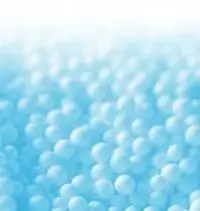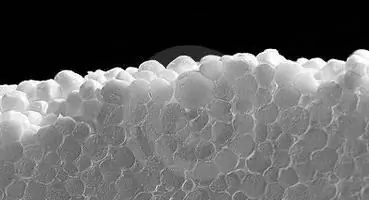Expanded polystyrene foam is produced using a special technology. The manufacturing process is divided into several stages. The material for production is a suspended expandable polystyrene.

At the first stage, a natural substance, pentane, is used. This substance is characterized by the ability to rapidly decompose in soil, water and atmosphere. Under the influence of pentane, foaming of polystyrene is carried out. The granules are then heated. For this, water vapor is used. The result is a uniformly foamed mass. This mass has a thin closed-cell structure. In a cubic meter of this material, the air concentration is ninety-eight percent. The air is enclosed in several billion closed cells. Expanded polystyrene foam has a special internal structure that provides low thermal conductivity of the material. The level of thermal conductivity of the material is similar to that of still air.

Expanded polystyrene foam, made by the above method, solidifies upon cooling and is a rigid mass. This mass includes closed cells filled with air. The quality of the resulting material depends on the equipment,which was used during production. Of no small importance is the raw material from which expanded polystyrene is made. Foam blocks - are products for the production of which the material in question is used. When broken, the foam looks like balls glued together.

The material is used as a heater. Expanded polystyrene has a low thermal conductivity, the level of which increases with increasing density. The material is moisture resistant. Expanded polystyrene foam does not swell in water and does not dissolve in it. The presence of a non-interconnected structure of cells that contain air almost completely prevents the penetration of moisture. Even if moisture penetrates between the fused granules, the water will quickly leave the material without having a detrimental effect on it. Being in conditions of high humidity does not adversely affect the material - it does not change its size, mechanical strength, appearance, or insulating characteristics. If the production process includes optimization of the molding mode, which allows to increase the level of fusion of the granules, then the water absorption can be significantly reduced.
In the vapor phase, liquid can seep into the Styrofoam. Steam will exit and enter the material at the same speed. If it turns into a liquid form, then difficulties may arise.
In addition to other qualities, the material is resistant to mineral aggressive environments. Styrofoam compatiblewith gypsum, cement, clay, bitumen, lime and other materials used in construction and decoration. The material is also resistant to a number of chemical compounds.






